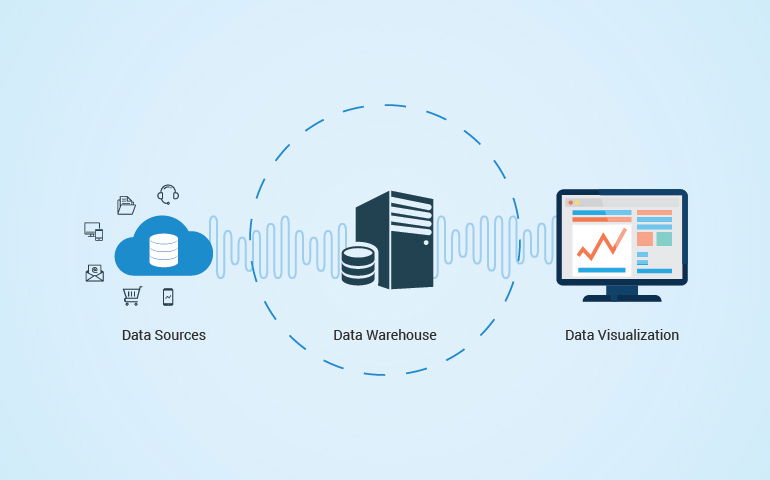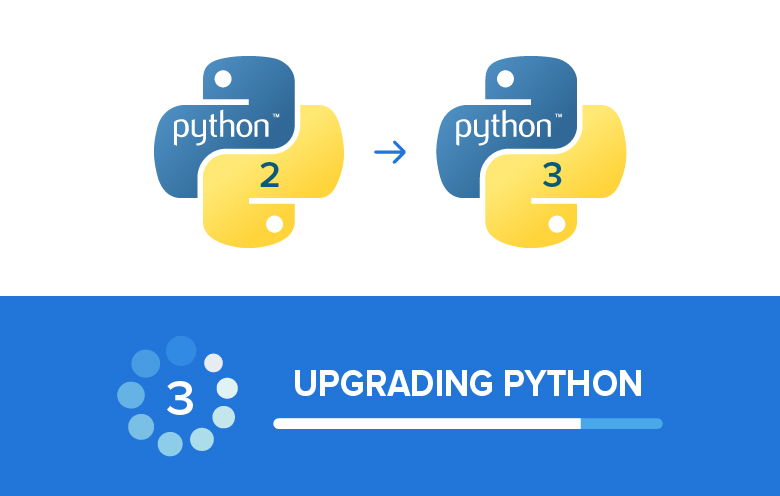Curious to know what data warehousing does, how it can help you to reprogram your business processes and save thousands or even millions? Or would you like to find out how Implementation of Data warehouse can enable new business opportunities? Then, this blog is for you.
So what is data warehousing?
Data warehousing is a centralized repository that stores data from multiple information sources like ERP, marketing, sales, supply chain management, etc. so that they can be transformed into understandable models for efficient querying and analysis by subject matter experts.
In simpler words, data warehousing does everything that a business advisor needs in order to:
- Increase revenue
- Reduce financial risk
- Gain competitive advantage
- Improve operational efficiency
- Manage customer expectations
- Analyze and predict trends and behaviors
- Develop core competencies in new businesses
Such are the impacts a data warehouse can bring to your business. That might be the reason why the BI and data warehousing guru Wayne Eckerson says, “A data warehouse is not a technology or tool that you can buy off the shelf. Data warehousing is a concept. It is primarily a business process that unites an organization in electronic form (i.e., through data) so it can function as a single entity, not a conglomeration of loosely coupled fiefdoms.”
How a data warehouse functions?
The data warehouse functions as a single central location unifying your data from one or more data sources. This data is then processed, transformed, summarized and distributed to data marts where users can gain access. The process is called ETL: Extract, Transform, and Load. We are going to be writing more about this topic in the future.
The following two use cases will tell you everything about how data warehousing can save millions.
6,689,502,913,449,135,000,000,000,000,000,000,000,000,000,000,000,000,000,000,000,000,000,000,000,000,000,000,000,000,000,000,000,000,000,000,000,000,000,000,000,000,000,000,000,000,000,000,000,000,000,000,000,000,000,000,000,000,000,000,000,000,000,000,000,000,000 are the number of alternatives for ordering the 120 deliveries assigned to a UPS driver each day.
Now, of course, the best interest of the driver and UPS is to find the most efficient routes. UPS nurtured the curiosity – of how to find the fastest, most fuel-efficient ways – with $1 billion annual technology spend and a staff of 500 people. What born after a decade (end of 2016) was: 55,000 ORION-optimized routes. It saves 100 million miles per year = 10 million gallons of gas consumed. It also reduces carbon emissions by about 100,000 metric tons – equivalent to over 20,000 passenger cars annually.
“The 100-terabyte data warehouse is the heart of our ORION and NRT tool which captures 8,700 data points per second that includes package pick-ups, transfers and deliveries and displays them in web-based dashboards.” Dave Barnes, UPS’s CIO and the winner of 2016 CIO 100.
Saving £100 million a year might be a herculean task for most companies. But for Tesco, the largest retailer in the UK, it is just about the communication of colored dots on the map with the relevant decision makers. Accordingly, Tesco’s C-level executives optimize 1000s of promotions every day and adjust its 3,000+ stores stock levels to fluctuations in demand. A weather model which predicts effects of weather on sales is what Tesco boasts on.
“The whole idea of employing data warehousing is: when business users ask for data they should gain insights rather than a spreadsheet with data. Business users now have gone from being completely uninterested to being exceptionally engaged.” Andy Ruckley, Tesco’s head of business intelligence (BI).
But what if you are a manufacturer, financial service provider, educator or the one from a healthcare sector? No worries, we have got you covered as well.
What data warehousing can do for you?
- As a manufacturer, you can warehouse critical data from manufacturing processes, sales, customer, shipment, and order happening at remote locations into a central repository and can share meaningful insights with product distributors, discrete manufacturers, or business partners.
- If you are a financial service provider, with data warehousing, you can help decision makers to see what’s coming, can consolidate reporting into a single channel, and improve access to data.
- As an educator, you can measure a student’s progress, increase alumni participation, and track student outcomes.
- If you are one of the decision-makers in a hospital, you can increase operational efficiencies, provide feedback to physicians on procedures and tests performed, and can discover and implement ‘best practices’ in your hospital to improve quality of care and reduce cost per outcome.
- As a retailer, you can replace your slow-selling lines with profitable ones, can give access to vendors to see how their products are selling and can quantify your campaign effectiveness easily and quickly across all channels.
In a sentence, regardless of the industry sector you are from, if you are running an enterprise with multiple products and locations, data warehousing is doubtlessly worth to employ.
Because, theoretically, your competitors might have access to mountains of data, but practically most companies have little ability to derive insights from most of it. The view is also supported by the following fact:
“Less than 1% of the world’s data is analyzed,” the EMC Digital Universe study. And Professor Patrick Wolfe, Executive Director of the University College of London’s Big Data Institute, takes it further by saying “that percentage is shrinking as more data is collected.”
The trick here is: the company who turns these massive data streams from a liability into strength as much as possible will be the champion. That’s why data warehousing is unquestionably worth to employ as most companies have one thing in common: too much data and too few actionable insights.
Takeaway
We now have got mobile, social media, cloud, and IoT-enabled devices. It means that the amount of structured, unstructured, and semi structured data keeps growing. You might wonder, but at this moment, we are producing 50,000 GB of data in a second. That’s tremendous. Isn’t it? However, the problem is not only in volume and velocity of data. In fact, it is in the heterogeneity of data along with the increasing complexity that comes with the variety, and in relating such diverse data sets that come from disparate sources onto the same platform to make use of all that data.
Keep enabling new business opportunities with data warehousing. Get in touch with our data warehousing experts. Happy actionable insights!



